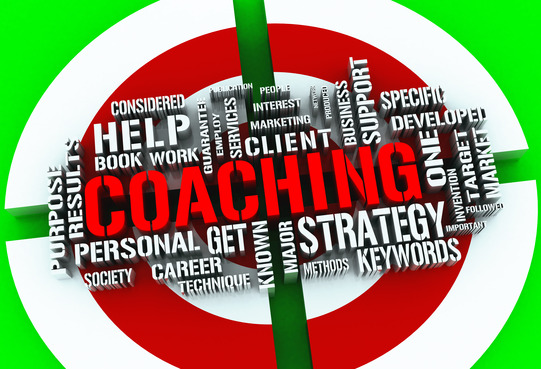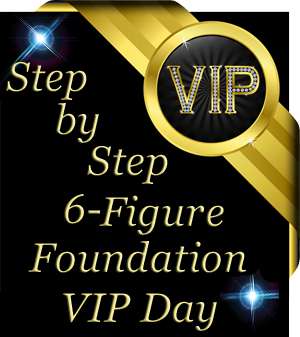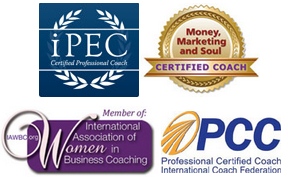Coaching’s Hottest New Trend: Is it for you?
 One of the hottest new ideas to take the coaching industry by storm in the last 5 years is the Virtual VIP Day. This type of coaching is so beneficial for both the client and the coach, it’s no wonder it’s become so popular.
One of the hottest new ideas to take the coaching industry by storm in the last 5 years is the Virtual VIP Day. This type of coaching is so beneficial for both the client and the coach, it’s no wonder it’s become so popular.
There are two types of VIP days: a full day (5 hours, with appropriate breaks) and a half-day (3 hours, with breaks). Just to clarify, these are not extended coaching sessions!
VIP days have a specific structure (designed by you), which works hand-in-hand with what your ideal client needs. The underlying structure often includes the following elements at its core:
10 Tips to Painlessly Produce a Great Marketing Video
 Lights . . . camera . . . action! The world has been mesmerized by moving pictures since the invention of the first movie camera in the 1880’s. Our love affair with this incredible piece of technology has remained strong and true for more than a century.
Lights . . . camera . . . action! The world has been mesmerized by moving pictures since the invention of the first movie camera in the 1880’s. Our love affair with this incredible piece of technology has remained strong and true for more than a century.
With each new frontier: the big screen, the television, video, and finally, the computer, we’ve found yet another way to enjoy our favorite pastime. It’s no wonder more and more people are searching YouTube instead of Google.
As an entrepreneur and a coach, you can benefit from our worldwide fascination with watching video by using the medium to promote yourself—and your coaching.
How Open to Success Are You Really?
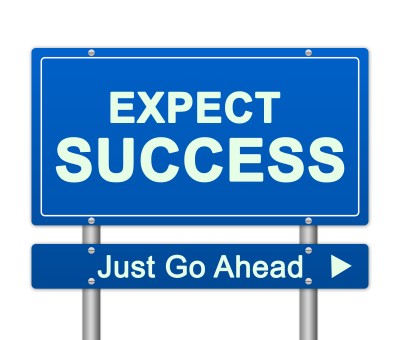 We’d all like to think we are completely open to success. However, the truth is some coaches are more open than others. Would you like to be a coach who is wide open to success? Read on!
We’d all like to think we are completely open to success. However, the truth is some coaches are more open than others. Would you like to be a coach who is wide open to success? Read on!
Typically, coaches who think they’re open to success feel as though they’re doing the right things to market and promote their business. They are confident, competent hard workers. Usually they’ve already done a tremendous amount of work on their branding, website, message, and niche.
Write Your Professional Bio — Today!
 If you’re launching a coaching practice — or any business — a well-crafted, professional bio is one of your key marketing tools. Your mom knows how awesome you are, but potential clients only know what you tell them, especially if they’re meeting you online. Your bio is a miniature, story-based resume that helps you sell your unique skills.
If you’re launching a coaching practice — or any business — a well-crafted, professional bio is one of your key marketing tools. Your mom knows how awesome you are, but potential clients only know what you tell them, especially if they’re meeting you online. Your bio is a miniature, story-based resume that helps you sell your unique skills.
You might be wondering, “What exactly do I put in a bio and what do I leave out? And how do I get the darn thing written?”
Let’s demystify the professional bio by breaking it down to its basics, starting with what a bio is not.
10 Tips to Remember when Enrolling People in Your Coaching
- The #1 thought people are having when they engage with you about your coaching, regardless of where, when, or how, is “I wonder what’s in this for me?”
ccc - “Coaching” doesn’t sell. Results do. Always speak about the end results.
ccc - If you don’t believe you are worth your fee, no one else will either.
ccc - If you help people feel better temporarily, they’ll lose their motivation to get help and feel better permanently.
ccc - People need to feel as though you “get” them. If they don’t, nothing else you say will matter.
ccc
Coaching their blocks: Where Do YOU Stop?
 Last issue I talked about the importance of re-framing your enrollment conversations from “selling” to “coaching.” When you coach people, you are in your element and can be sincere, doing what you do best. You can find that post here: Enrollment from the Heart.
Last issue I talked about the importance of re-framing your enrollment conversations from “selling” to “coaching.” When you coach people, you are in your element and can be sincere, doing what you do best. You can find that post here: Enrollment from the Heart.
Many coach’s biggest fear is that they’ll be seen as “pushy.” So they often lean in the other direction and don’t challenge the limiting beliefs, gremlins, or their prospective client’s doubt and fear because the person may suspect their motives.
Enrollment from the Heart: Authentically Coach your way to YES!
 It’s the biggest concern coaches have when it comes to enrolling clients: not wanting to be pushy or manipulative. You became a coach to uplift others, and part of what makes that possible is having high integrity. So naturally you shy away from anything that feels manipulative.
It’s the biggest concern coaches have when it comes to enrolling clients: not wanting to be pushy or manipulative. You became a coach to uplift others, and part of what makes that possible is having high integrity. So naturally you shy away from anything that feels manipulative.
At its very core, true coaching is about helping the client with what they want (the client’s agenda). So the very last thing you want to do is be “pushy.” You don’t want to feel as though you’re pushing your agenda. It’s ingrained in you that that’s just plain wrong.
Coach Your Way to YES with 3 Magic Questions
If you’re like most new coaches, the idea of “selling your services” makes you uncomfortable. You don’t want to sell anyone on anything. You just want people to naturally see the value in coaching and sign up.
The challenge is, even though you clearly see the value in coaching, most of your prospects don’t. The value isn’t apparent to them – not the way it is in a new car, or a big screen TV, or a vacation to Hawaii.
Even if they do see some value, it’s usually not even close to the incredible transformation you’re offering them.
Feeling Rejected by a Potential Client? Free Yourself from that Feeling Forever!
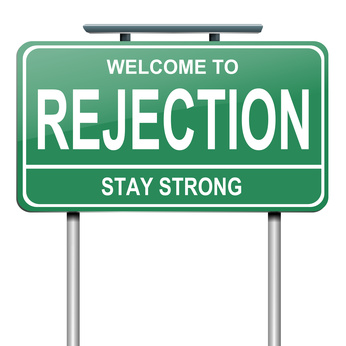 Rejection: The word often brings back painful memories of being turned down by that special someone, or of receiving a polite letter following the interview saying “we’ll keep your resume on file.”
Rejection: The word often brings back painful memories of being turned down by that special someone, or of receiving a polite letter following the interview saying “we’ll keep your resume on file.”
When you’re a heart-based entrepreneur, it’s tempting to fall into the trap of feeling rejected when a potential client turns you down, particularly if they’ve interviewed more than one coach.
It’s especially difficult when your business is relatively new. You may second guess yourself, wondering what you could have said or done differently.
5 Strategies That Get New Coaches Quick Results
 New Coaches have different needs than more established coaches. If you make less than $50,000 a year, different marketing strategies work best for you.
New Coaches have different needs than more established coaches. If you make less than $50,000 a year, different marketing strategies work best for you.
Because their needs are different, when a new coach hires a marketing professional who works mainly with more established coaches, it often results in disappointment.
As the new coach you end up with a lot of great information that you’re sure will be useful “someday,” but in the meantime, you are no closer to getting your business up, running and profitable in the way you expected to when you signed up.
